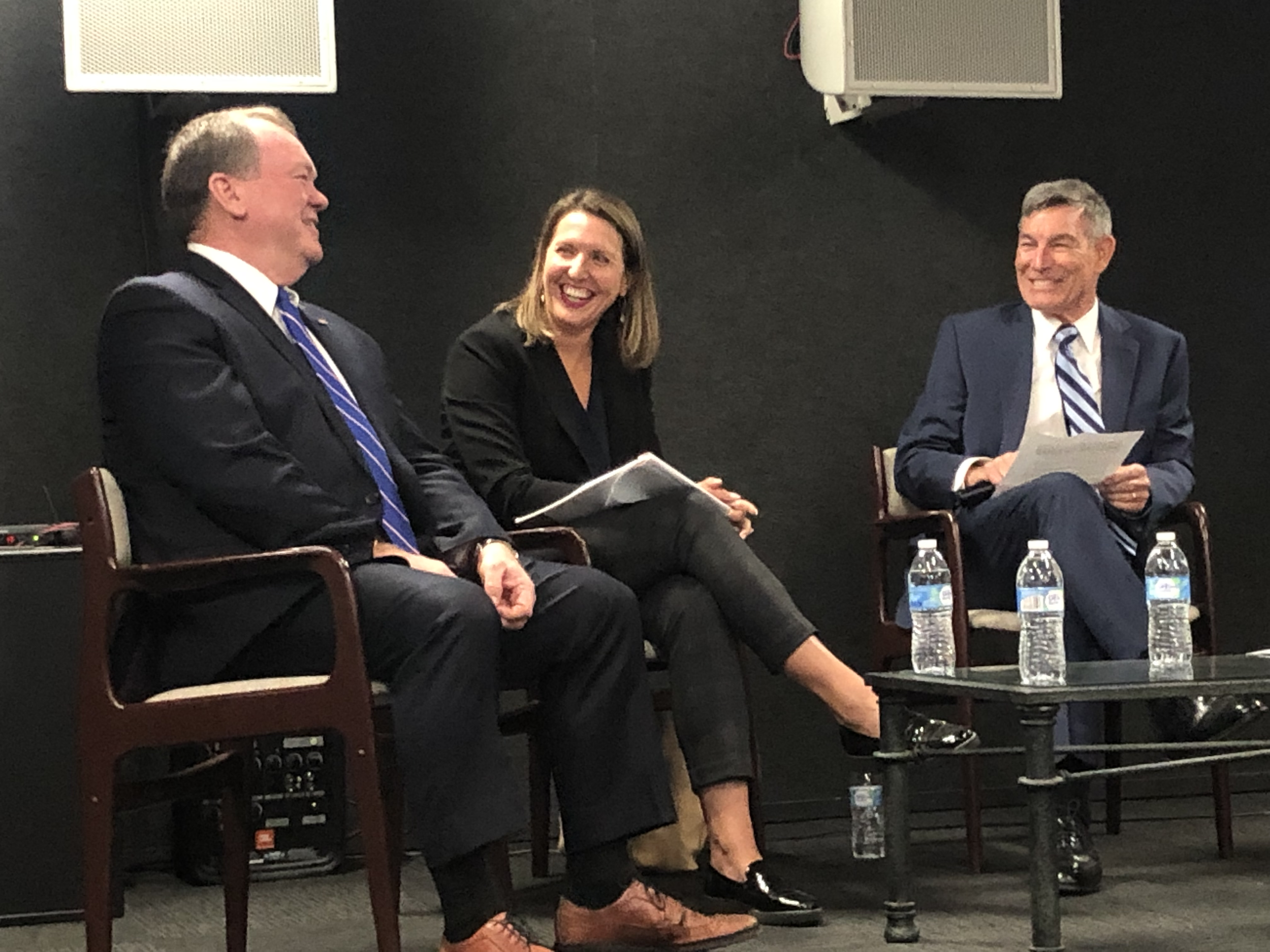Subnational cooperation is a ‘must-have’ in the U.S.-Mexico relationship
Published: March 20, 2023
Mexico City and Washington set the diplomatic terms of engagement at the national level, while state, local, and non-governmental organizations undertake day-to-day cross-border cooperation. These activities, frequently referred to as subnational diplomacy or cooperation, advance key binational priorities, build core competencies for mutually beneficial collaboration, and can keep activities in motion when relations stall at the national level.
In late February, the Pacific Council’s Mexico Initiative, in partnership with the Consulate General of Mexico in Los Angeles, organized a dialogue on subnational cooperation with a group of mayors and state officials visiting California from across Mexico. The broad-ranging discussion touched on subnational diplomatic work between the U.S. and Mexico on topics including migration, citizen security, economic development, and the environment. Pacific Council member Jim McDonnell, former Sheriff for the County of Los Angeles and the Director of the Safe Communities Institute at the USC Sol Price School of Public Policy, and Jenna Gilbert, Director of Refugee Representation at Human Rights First, were joined by officials from Mexico: Roberto Velasco, Chief Officer for North America at the Mexican Ministry of Foreign Affairs, and Kurt Honold, Minister of Economy and Innovation for the state of Baja California. Dr. Richard Downie, Chair of the Mexico Initiative advisory board, moderated the dialogue.
The discussion opened with Roberto Velasco highlighting the necessary role that subnational diplomacy between Mexico and the U.S. plays in a complex and multifaceted binational relationship, calling on states and municipalities to work together across the border on issues like the drying up of the Colorado River, the fentanyl crisis affecting the U.S., which is also quickly growing in Mexico, and U.S. arms flowing south into Mexico. According to Velasco, the government of Mexico will not impede cities from engaging with local governments across the border or the U.S. federal government because subnational cooperation is not a ‘nice-to-have’ but a ‘must-have’ in the binational relationship.
This type of cooperation is especially impactful to increase community safety, building on the public safety goals that communities in the U.S. and Mexico share. Lessons learned on community policing in California are one area where authorities can collaborate. Los Angeles has been a center of both controversy and also innovation on public safety, in recent years relying on the importance of partnerships and problem-solving in community policing. Mexico has similar experiences to share: the panel heard about the experience of Lazaro Cardenas, Michoacan, where the city has had success in reducing crime and engaging in community outreach. Government survey data show that the perception that the city is safe has increased from 17.8% of the population in 2016 to 51.3% in 2022.
In contrast, the data for Tijuana show that the perception of safety is little changed between 2016 and 2022 (32.7% to 33.9% of the population), dropping as low as 17.2% in 2020. Border communities need to increase public safety, particularly as many migrants are now staying longer in border communities in Mexico as a result of restrictive U.S. asylum policies. California has taken subnational actions to blunt the effects of some federal immigration policies, including funding for legal representation and social services, providing identification documents, and decriminalizing the informal economy. As Mexican border communities are forced to become implementers of U.S. immigration policy, subnational actions like these could be key tools to ensure migrants are treated humanely, especially because national policies do not always reflect border realities.
The San Diego-Tijuana border is emblematic of the policy disconnect between Washington and Mexico City and their respective border communities. The binational ‘CaliBaja’ region is home to communities that are very close to one another with many shared realities. In the case of Baja California, migration has made the state a mosaic of Mexico, and now the world as people from many countries have made the city their temporary or permanent home. This diversity has contributed to CaliBaja’s dynamism, making it a region where subnational leaders now advocate for innovations such as a binational public transport system. Spurred by global trends, nearshoring is not only an opportunity for CaliBaja, but also for the U.S., Mexico, and Canada as a whole, providing North America with the opportunity to strengthen its position as a leading economic region worldwide.
Many Californians, and Angelenos in particular, engage with counterparts in Mexico across a range of issues, from migration to conservation and economic development to citizen security. The know-how they have developed to build successful cross-border partnerships is a key skill for states and municipalities, whether the border is tens, hundreds, or thousands of miles away. As cooperation between Mexico and the United States increases, subnational diplomacy will play an important role in advancing shared agendas.
Author: Nick Wolf, Fellow, Pacific Council Mexico Initiative
